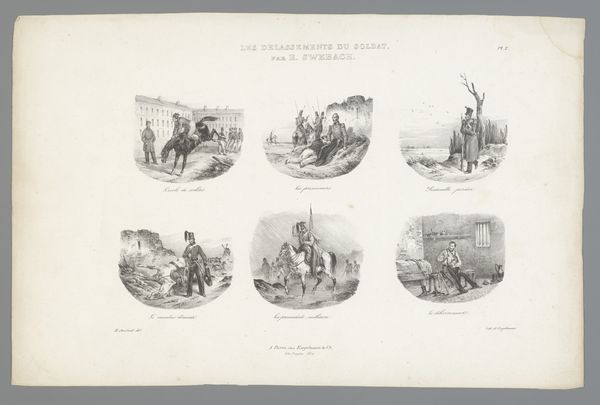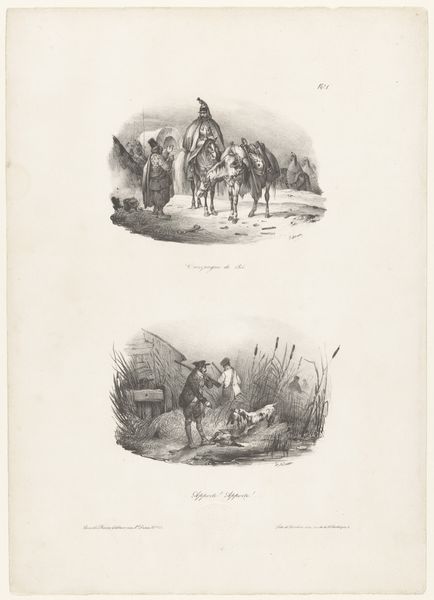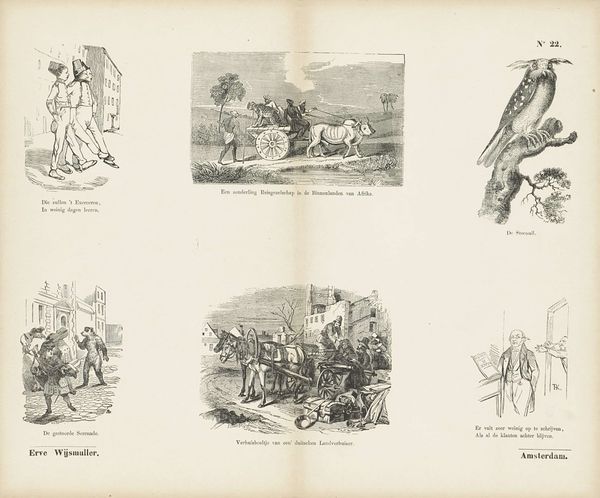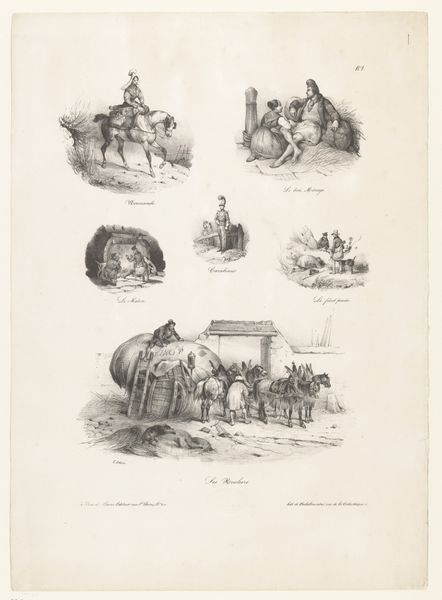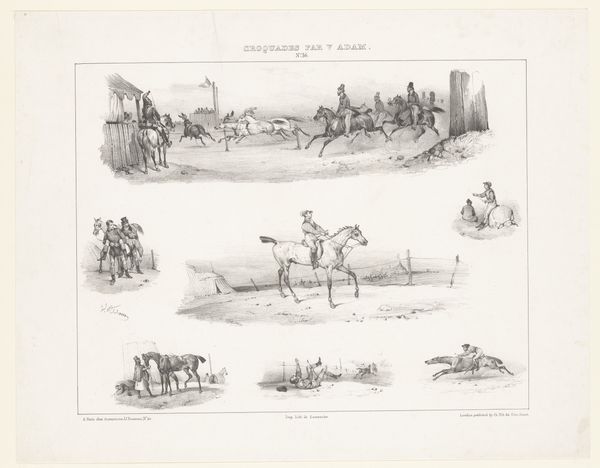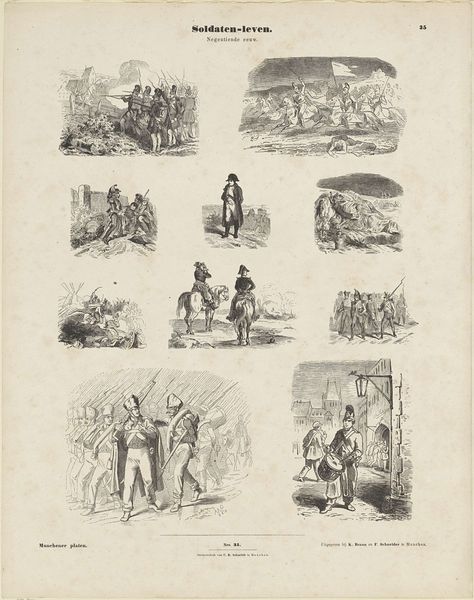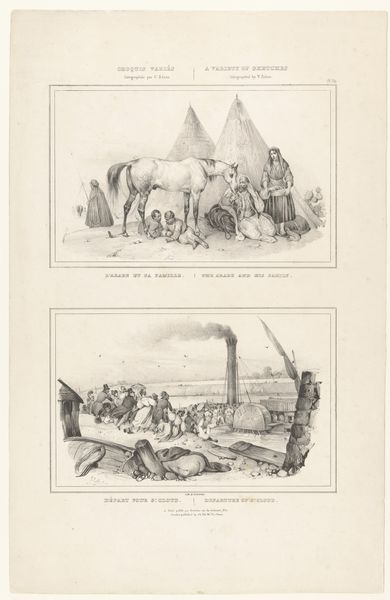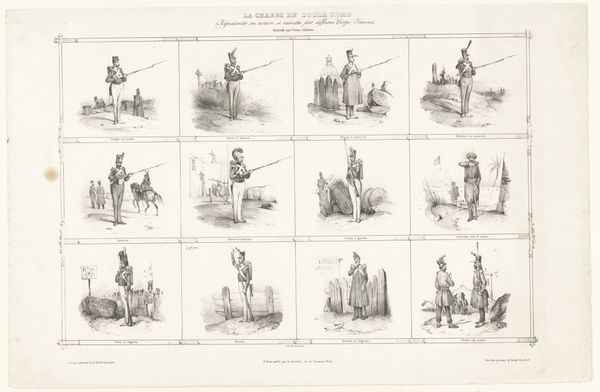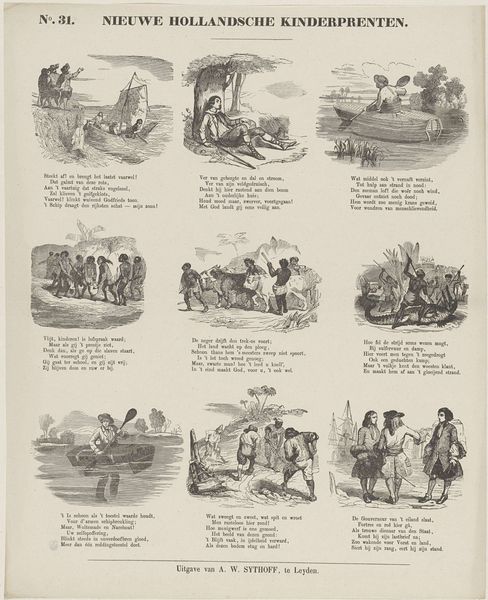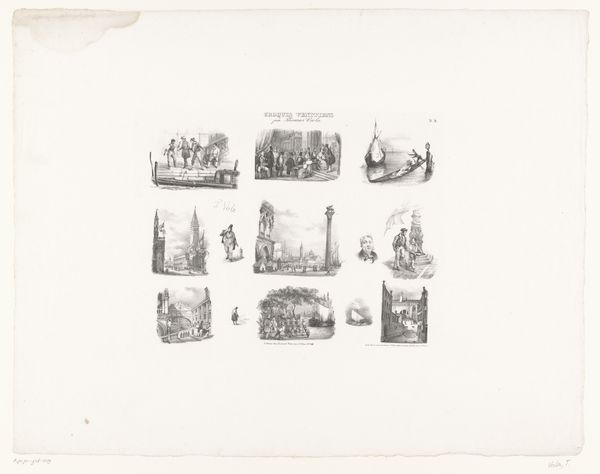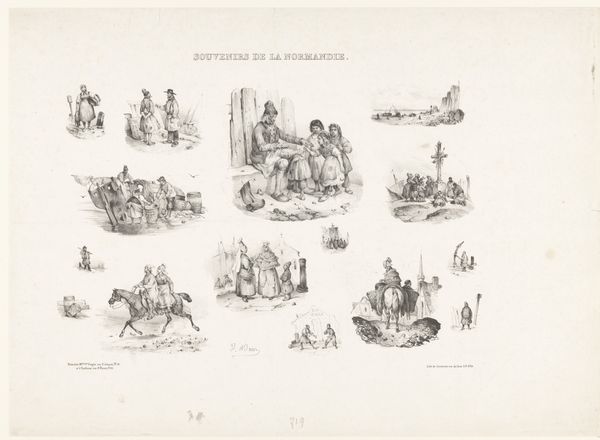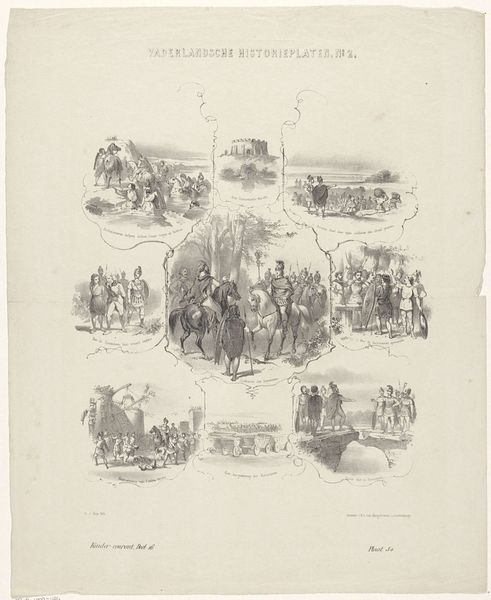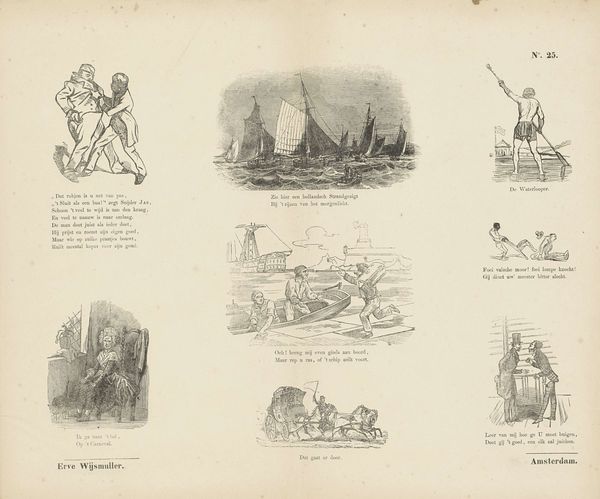
drawing, print, etching, paper, ink
#
drawing
# print
#
etching
#
paper
#
ink
#
romanticism
#
genre-painting
#
watercolor
Dimensions: height 317 mm, width 485 mm
Copyright: Rijks Museum: Open Domain
Curator: The quiet desolation almost pulls you in, doesn't it? Before us, we have Bernard Édouard Swebach’s "Six depictions of soldier's life", created between 1825 and 1833. It's an etching and print, with ink on paper. Editor: Absolutely. I'm drawn to the monochromatic tones and the circular framing of each scene – it's like looking into individual worlds, each hinting at a different stage or aspect of military life. Very affecting, though somewhat reserved. Curator: I find that reserve incredibly telling. In the context of post-Napoleonic Europe, we see the glorification of war begin to erode. The set hints towards Romanticism and hints towards genre painting with an eye on more mundane moments, not just heroic victories, which makes this set of scenes pretty special and reflective of the shift in European consciousness. The realities, like discipline, recuperation, relationships, are laid out bare on this page. Editor: Exactly, there is very little fanfare to these slices of life. I’m imagining stories unfolding in each little vignette—like the fourth from the left in the bottom row: some officers raising their glasses to the officer outside, are they plotting or celebrating? It is also, perhaps a study on social interactions and class distinction. The artist really has let each tiny scene speak for itself, in terms of drama. The possibilities are so interesting and rich! Curator: And there are so many levels of questioning about power in here, particularly when you examine them from a race and gendered perspective; the images certainly lack any sense of equity among the represented figures. Editor: Of course, that tracks when you consider the historical framework this piece existed in; but seeing these details in a work so intimately, reminds us about those inequities still felt to this day, in certain parts of the world. It allows you to confront its past so you understand the reality of the present. Curator: A very necessary lens with which to view it. Editor: In total agreement, I would invite any visitor to consider the modern implications of these depictions, and if any aspects of its visual representations ring true today!
Comments
No comments
Be the first to comment and join the conversation on the ultimate creative platform.
